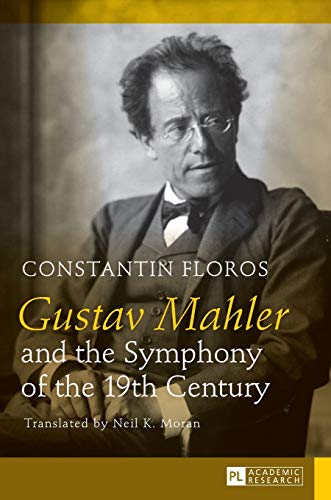(Ebook PDF) Gustav Mahler and the Symphony of the 19th Century 1st Edition by Constantin Floros
$50.00 Original price was: $50.00.$35.00Current price is: $35.00.
Gustav Mahler and the Symphony of the 19th Century 1st Edition Constantin Floros Digital Instant Download
Author(s): Constantin Floros
ISBN(s): 9784920137848, 3631626894
Edition: 1
File Details: PDF, 9.44 MB
Year: 2014
Language: english
(Ebook PDF) Gustav Mahler and the Symphony of the 19th Century 1st Edition by Constantin Floros -Ebook PDF Instant Download/Delivery:9783653024272, 3653024277
Instant download Full Chapter of Gustav Mahler and the Symphony of the 19th Century 1st Edition after payment

Product details:
ISBN 10:3653024277
ISBN 13:9783653024272
Author: Constantin Floros
The subject of this book is the semantics of symphonic music from Beethoven to Mahler. Of fundamental importance is the realization that this music is imbued with non-musical, literary, philosophical and religious ideas. It is also clear that not only Beethoven, Schubert and Bruckner were crucial role models for Mahler, but also the musical dramatist Wagner and the programmatic symphony composers Berlioz and Liszt. At the same time a semantic musical analysis of their works reveals for the first time the actual inherent (poetic) quintessence of numerous orchestral works of the 19th Century.
Table of Contents:
Introduction
First Part: Basics of the Symphony
- I. Mahler’s place in history
- Eclectic or original genius?
- Bruckner-Successor or Bruckner-Antipode?
- II. Beethoven and the new categories of symphonic music
- III. The history of the reception of Beethoven’s music
- IV. Mahler’s conception of the symphonic cantata
- V. Borrowings from the Lieder repertoire
- Schubert, Mendelssohn and Brahms
- Mahler’s intentions with his borrowings
- VI. Aspects of architectonics
- Varying number of movements and their arrangements – sectional structuring
- From Beethoven’s Pastoral and Berlioz’ Fantastique to Mahler’s Titan
- VII. Content and Form: The “axis” of the new aesthetics
- VIII. The cyclic form principle and the programmatic idea
- Beethoven
- Schubert and Schumann
- Berlioz
- Liszt
- The correlation between music and program in Liszt’s Les Préludes
- Bruckner
- Tchaikovsky
- Mahler
- “Flashbacks”: Six examples from the symphonies of Beethoven, Berlioz, Bruckner and Mahler
- IX. Musical themes and the “poetical conception”
- The alteration and ornamentation of thematic characteristics as a means of expression in Berlioz
- Simultaneous reduplication of contrasting themes as a means of expression in Berlioz, Liszt, Bruckner
- X. The Mephisto movement of Liszt’s Faust Symphony
- The themes and Liszt’s method of ornamentation
- The Malédiction for piano and string orchestra as a source for the Mephisto movement
- The curse as a central idea of the Mephisto movement
- Liszt’s setting of the Chorus mysticus
Part Two: The Universality of the Symphony
- XI. Characteristics in general
- Fundamentals
- Regarding Adorno’s conception of the “material theory of form in music”
- XII. Characteristics derived from vocal music
- Speaking parts: Recitative and Arioso
- The Chorale: Regarding the meaning of genres in the symphonies of Berlioz, Mendelssohn, Liszt, Brahms
- Hymns: The Hymn in Bruckner and Mahler as well as in Beethoven, Schubert and Brahms
- Lieder
- XIII. Characteristics derived from instrumental music
- March (marziale) and funeral march: The meaning of the category in the symphonies of Berlioz, Liszt
- Entombment music: “like a very slow funeral procession”
- Pastorale: The genre in Beethoven, Berlioz, Mendelssohn, Liszt, Bizet, Brahms and Mahler
- “Music from afar”: Orchestra in the distance or illusion of an orchestra in the distance
- Crescendo (and diminuendo) as sound dynamics expressing musical form: March music from afar, gradual dynamics
- XIV. Scherzo, scherzando and dance characteristics
- Fundamentals
- Minuet
- Ländler
- Waltz and Valse
- XV. Conclusions
- Structure of the opening movement of Mahler’s Third Symphony
- Analysis in accordance with the character
Third Part: Elements of the Symphonies
- XVI. The symbol in music
- Explanation of the concept
- Schering’s conception of the symbol
- Techniques for solving the problem (heuristic)
- XVII. The semantics of the sounds of birds
- Birdcalls and sounds as the “sounds of nature”
- Mahler and the birdcalls in Beethoven’s “Scene at the brook”
- Mahler and birdcalls in Wagner’s “Forest murmurs”
- The “bird of the night”
- The “bird of death”. The song of the nightingale as the “echo of earthly life”
- Bird cantilenas, duets and concerts
- XVIII. Elementary Motifs
- Calls and signals
- Sighing motifs: Plaintive cries, woes, motifs of suffering, “screams”
- XIX. Motifs of falling and symbols of the abyss
- XX. Symbols of night and of sleep
- XXI. Satanism and the Crucifix
- The polarity of the spiritual world in the music of Franz Liszt
- Liszt’s attraction to Goethe’s Faust and Dante’s Divine Comedy
- The polarity between calamity and victory
- The diabolus in musica and the “tonal symbol of the Cross”
- XXII. “Dall’ Inferno al Paradiso”
- Regarding a fundamental philosophical-poetical idea in the symphonies of Liszt and Mahler
- Inferno and Lucifer motifs in Liszt, Tchaikovsky and Mahler
- The “tonal symbol of the Cross” as a representation of the “heavenly” in Wagner, Mahler, Brahms
- Motifs for “eternity” in Wagner and Mahler
- XXIII. La Gamme terrifiante: The history of the whole tone scale
- XXIV. Rhythmic Leitmotifs
- Symbols of death, fate and combat
- Beethoven
- Liszt
- Wagner and Bruckner
- Strauss
- Tchaikovsky
- Mahler
- Symbols of death, fate and combat
- XXV. Guiding sounds (Leitklänge)
- Characteristic chords and symbols
- An “eerie“ minor third chord as a tonal symbol in Wagner, Liszt, Mahler and Strauss
- Major-minor motivic shifts in Schubert, Mahler, Strauss and Brahms
- The “terrifying fanfare” in Beethoven’s Ninth and in Mahler’s Second
- Four note chords as mottos
- Neapolitan sixth chords and dissonances at climaxes in Mahler, Schubert and Strauss
- The shape of Bruckner’s climaxes
- The nine-tone sound in the Adagio of Mahler’s Tenth
- Regarding the technique of imprévu: A “frightening note” in Beethoven, Berlioz, Bruckner and Mahler
- Characteristic chords and symbols
- XXVI. Idiophonic sound symbols
- Regarding sound symbols generally
- The tamtam as a funereal and macabre sound symbol in Mahler, Wagner, Liszt, Strauss, Tchaikovsky
- Bell sounds in Berlioz, Liszt and Strauss
- Bell sounds and a sound symbol for the eternal in Mahler
- The symbolic and coloring functions of the Glockenspiel
- Cowbells as a sound symbol for “otherworldly solitude”
People also search:
gustav mahler symphony 1
gustav mahler symphony of a thousand
about gustav mahler
mahler gustav symphony 5
gustav mahler’s works are known for
Tags:
Gustav Mahler,Symphony,19th Century,Constantin Floros


